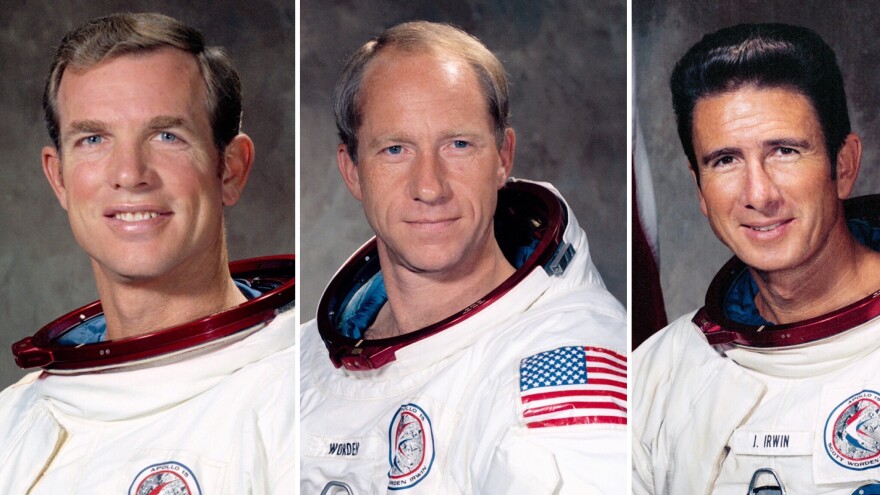Last week’s MoonFest events at MSU’s Abrams Planetarium celebrating the first steps on the moon 50 years ago has us remembering the Apollo space missions.
Forty-eight years ago this week, Apollo 15 launched. It was NASA’s fifth mission carrying astronauts to the surface of the moon. It’s especially important in Michigan history because all three astronauts aboard had ties to the state.
NICOLLE ZELLNER: Al Worden was born in Jackson, Michigan. David Scott attended the University of Michigan before transferring to the U.S. Military Academy at West Point. And, both Worden and James Irwin received Master's Degrees from the University of Michigan in aeronautical engineering.

SCOTT POHL: That's pretty amazing that they all spent time in Ann Arbor.
ZELLNER: Yes and no. It turns out that the University of Michigan offered the first-ever aeronautical engineering program starting in 1914, and in 1963, NASA awarded it $1.75-million, which is about the equivalent of $14 and a half million today, to build a building that would encompass all of their engineering programs. And so, this became a destination for a lot of the men I guess, who were interested in advancing their degrees through the military, through Michigan, and then being good candidates for a NASA astronaut program.
POHL: Let's learn a little bit more about this mission. It was the first manned mission to the moon that utilized a lunar rover.
ZELLNER: Yes, indeed, it was the first crewed mission to have a lunar rover. It traveled 27.9 kilometers, and because the astronauts were able to venture further away from the LM (Lunar Module) than previous astronauts, they were able to collect a lot more diverse samples. They eventually brought back 77 kilograms of sample, including something that's known as the genesis rock. This rock is pretty special, because it helped us understand how the moon formed and differentiated it's one of the oldest rocks in our collection.
POHL: When you consider how far they traveled from the lunar landing module, was there any particular concern or danger associated with being that far away from the base?
ZELLNER: Yes, I think it was particularly dangerous only because it was the first time anybody had ever done something like this. I'm not even sure that they were confident the lunar rover would actually work in that low gravity of the moon, but because NASA has so many contingency plans in place, the astronauts were in constant communication with each other, and also with Houston.
POHL: These weren't the only astronauts with Michigan ties. Can you tell me about some others?
ZELLNER: Sure. Gemini 4 consisted of James McDivitt and Ed White. Both of them received degrees from the University of Michigan as well. Ed White conducted the first spacewalk for the United States, so that was pretty exciting. When they returned to Earth, they were treated to a parade of heroes down a main street in Ann Arbor. Then shortly thereafter, the building that houses all of engineering was completed. There was also Jack Lousma, who was born in Grand Rapids. He received an undergraduate degree from Michigan as well. He never flew (an Apollo mission). He was slated to fly on Apollo 20 before that was canceled, but he eventually flew in Skylab in 1973.





